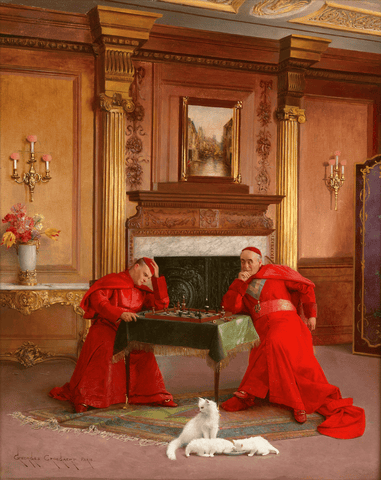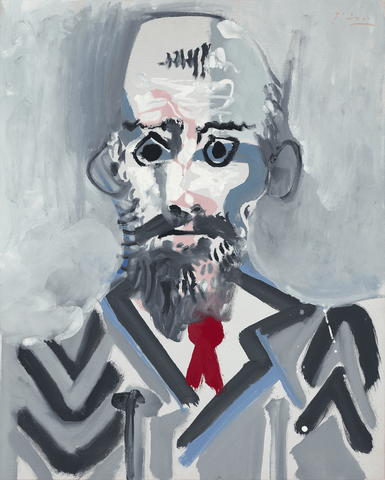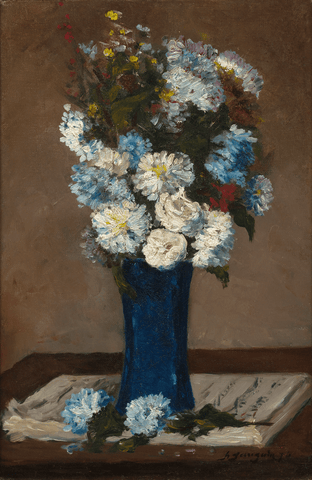Artists
Croegaert, Georges
LIFE & CAREER
Born in Antwerp, Georges Croegaert studied at the Antwerp Academy of Fine Arts before moving to Paris in 1876. There, he would remain active as an artist for the rest of his life. Croegaert reached pinnacles of success as a portrait and genre painter, his work garnering critical acclaim as highly sought-after by both English and American art collectors. Between 1882 and 1914, the artist exhibited regularly at the Paris Salon and once in Vienna in 1888. Croegaert initially began painting highly detailed still-life scenes of birds and flowers early in his budding career, occasionally completing an outdoor genre scene to add to his growing repertoire. Eventually, he built his highly successful career on salon portraits of glamorous young women dressed in sumptuous fabrics set in luxurious rooms.
SALON PORTRAITS
The great majority of Croegaert’s portraits depict elegant young women, frequently distinguished by their lavish detail and innate sense of luxury, texture and affluence. Many art historians suspect that the high realism exhibited in these portraits are a direct result of the influence of his relative, the 19th-century Belgian artist Jan Jacob Croegaert-Van Bree. By the time Croegaert arrived in Paris, portraiture illustrating the ostentatious bourgeois lifestyle of fashionable Parisian urbanites — an artistic trend begun by Belgian painter Alfred Stevens in the mid-19th century — was well on its way to becoming wildly popular. Belgian painters working in Paris such as Charles Baugniet and Gustave Léonard de Jonghe all adopted this new style for which Croegaert would soon become famous. With the onset of the Belle Époque in the 1870s, this genre of portraiture became particularly popular at the Paris Salon, and a ready market for such works was born in Europe as well as America. Croegaert’s incredibly realistic depictions of these Parisian society women tend to contain a slightly ironic undertone. These wry artistic twists are found in his frequent “winks” at contemporary fashions of Japonism and Orientalism. In many of his works, his lady subjects appear to be swooning, overcome with infatuation with Japanese and Oriental art, as well as fantasies of far-away travel.
In the final decades of the 19th century, Croegaert completed a series of smaller portraits of women rendered with phenomenal realism. Depicted solely at bust length, his subjects are captured with an ethereal quality, appearing to float against airy, unadorned backgrounds. The artist’s distinctive eye for luscious color palettes, nearly photorealistic detail and an overall concern for cohesive design are all on display in these paintings. Each work is dubbed with a generic title, such as A Blonde or Portrait of an Auburn-Haired Woman.
CARDINAL PAINTINGS
Croegaert’s oeuvre continued to grow in acclaim, and he eventually emerged as the leading artist of the popular 19th-century subgenre of “Cardinal paintings.” These tongue-in-cheek works were comical representations of Catholic cardinals enmeshed in lavish surroundings while engaged in the most mundane — or cheeky — of activities. Characterized by a high degree of finish and a rich color palette, these masterpieces exhibited Croegaert’s mastery of the narrative style, incorporating objects in the background of his scenes that support the entire story of the painting. Croegaert began to paint his “Cardinal paintings” sometime in the late 19th century, perhaps in an effort to take advantage of a lucrative, new niche of the art market. Though he would become a highly successful practitioner of this quirky genre, he was not the only artist in Paris painting these scenes. Italian artist Andrea Landini and the French Jehan Georges Vibert, Charles Edouard Delort and Marcel Brunery were all painters who made a name for themselves in this genre. There was a high market demand for cardinal paintings during the late 19th and early 20th centuries, evidenced by the sheer number of artists working in this genre. Today, these cardinal scenes are iconic. Red-robed cardinals were depicted participating in scintillating activities such as “approving the artist’s nude model,” gambling in poker games and gorging on extravagant banquets of food and drink, as well as more insipid ones such as games of chess and stamp collecting. These artists boldly poked fun at the excessive and often debauched lifestyles of the upper echelons of the Catholic clergy at a time in history when the shroud of secrecy that had long enveloped the Catholic Church began to slip. But the tone of Croegaert’s Cardinal paintings are deftly humorous and only slightly mocking in comparison to the explicit overtones of some of his contemporaries. His exacting and rich technique was perfectly suited to this genre, allowing the artist to depict the exuberant glut of the high clergy’s lifestyle amid an environment lush with ornate furnishings, tapestries, glass and silverware rendered in realistic detail. Croegaert was particularly accomplished in capturing the vivid shades of red and purple of the cardinals’ robes, as well as the narrative humor in the faces and expressions of his subjects.












